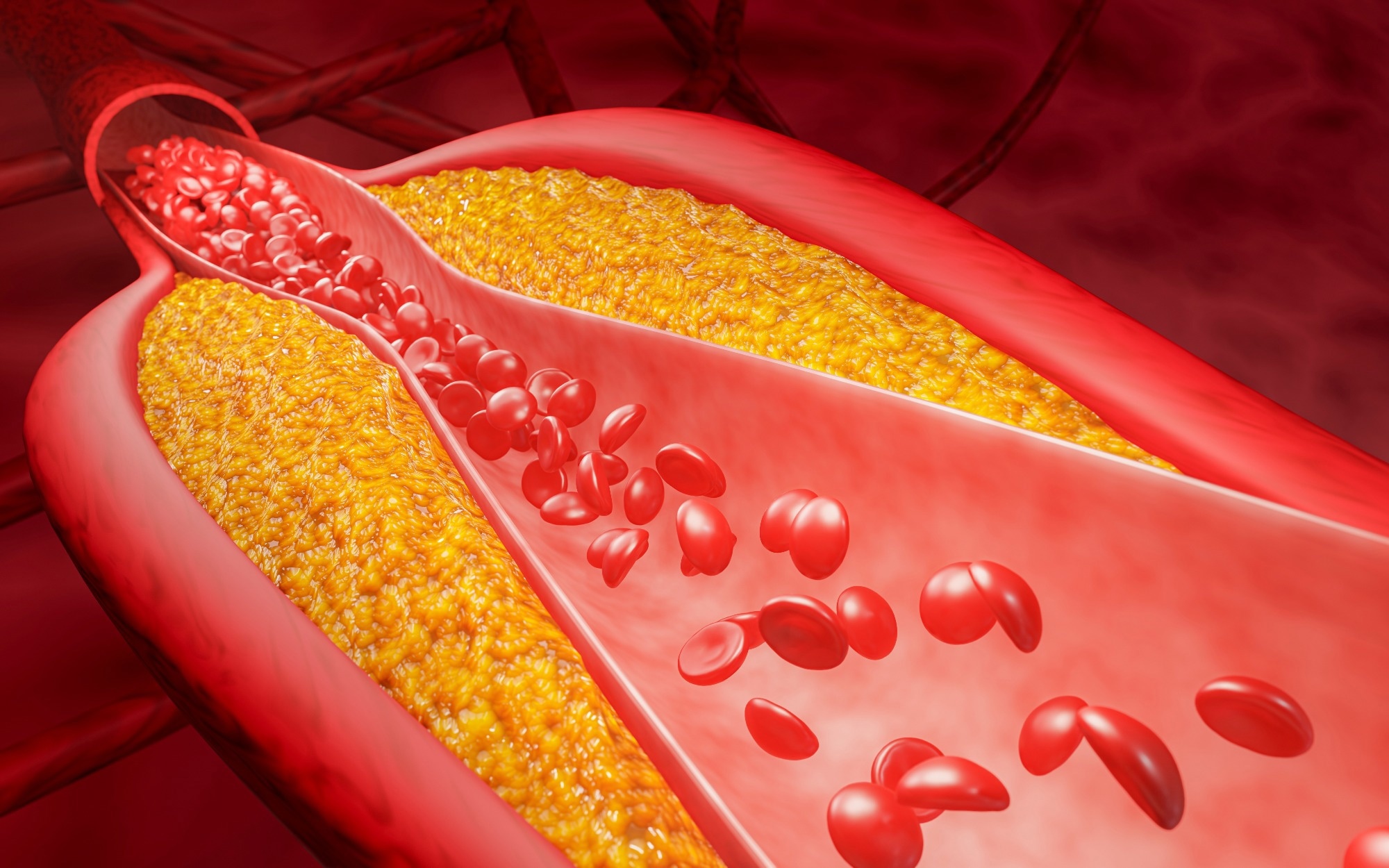In a recent study published in The Lancet, researchers examine the characteristics, identification, and management of children and adolescents with heterozygous familial hypercholesterolaemia (HeFH) globally.
 Study: Familial hypercholesterolaemia in children and adolescents from 48 countries: a cross-sectional study. Image Credit: ridersuperone / Shutterstock.com
Study: Familial hypercholesterolaemia in children and adolescents from 48 countries: a cross-sectional study. Image Credit: ridersuperone / Shutterstock.com
Background
FH, which affects one in 311 people globally, is a genetic disorder that causes high low-density lipoprotein (LDL) cholesterol levels and an increased risk of early atherosclerotic cardiovascular disease (ASCVD). Most adults with FH are diagnosed in their 40s, often after developing ASCVD; however, only 2.1% are identified during childhood or adolescence. The late detection of FH contributes significantly to early myocardial infarctions.
Early identification and treatment of FH in youth can significantly reduce ASCVD risk, thus offering a normal life expectancy as compared to late-diagnosed relatives. Despite this, less than 10% of individuals with FH are identified globally.
Further research is needed to address the significant disparity between the prevalence and detection of FH, particularly in children and adolescents, to enable early interventions and mitigate the future impact of ASCVD.
About the study
In the current cross-sectional study, researchers analyze children and adolescents under 18 years of age diagnosed with FH using data from the Familial Hypercholesterolaemia Studies Collaboration (FHSC) registry. The FHSC registry, which spans from October 2015 to January 2021, compiled information from 55 regional and national registries across 48 countries. The FHSC, a global network of investigators, gathers data on demographic characteristics, laboratory tests, clinical variables, and genetic information, focusing on those diagnosed with FH.
For diagnosing FH, either genetic data or established clinical criteria were used, with preference given to genetic diagnosis when available. The study excluded individuals with LDL cholesterol levels indicative of FH. The primary goal was to evaluate the current methods of identifying and managing children and adolescents with FH.
Data from the registry were standardized and harmonized into a single dataset for analysis. This dataset was then evaluated globally and stratified by variables such as World Health Organisation (WHO) region, age, country income status, and index-case status.
The analysis focused on median values and relative frequencies for continuous and categorical variables. Statistical methods, including quantile and logistic regression, were applied to understand the distribution and associations of LDL cholesterol levels.
The researchers also examined the diagnostic criteria used for FH, which were developed initially for adults and adapted for children. The effectiveness of these criteria in detecting FH in the pediatric population was determined by comparing genetic data and clinically diagnosed cases. Furthermore, the impact of triglyceride levels on LDL cholesterol measurements in those not on lipid-lowering medication was determined.
Through the use of advanced statistical tools in software like Stata and R, the researchers aimed to provide a better understanding of FH in young populations, the efficacy of current diagnostic criteria, and the potential gaps in identifying and managing this condition early in life.
Study results
Out of 63,093 individuals included in the FHSC registry, 11,848 were children and adolescents under 18 years with FH. Over 92% of these individuals were from Europe, with nearly half from the Netherlands.
Over 96% of the study cohort were from high-income countries, 89.9% of whom had a genetically confirmed diagnosis of FH, whereas 10.1% were clinically diagnosed. The prevalence of genetic diagnoses was significantly higher in high-income countries than in lower-income nations.
The median age at the time of registry entry was 9.6 years, with a near-equal distribution of male and female participants. Physical signs related to FH were rare but increased with age.
Cardiovascular risk factors and diseases were infrequent; however, geographical and income-related variations in their prevalence were observed. For example, xanthomas and coronary artery disease (CAD) were more prevalent in participants from non-high-income countries.
At registry entry, 71.6% of the children and adolescents were not on lipid-lowering medication (LLM) and had a median LDL cholesterol (LDL-C) level of 5.00 mmol/L. LDL-C levels were highest in children between two and three years of age and did not significantly vary by sex, country income status, or index-case status. No correlation was observed between LDL-C and triglyceride concentrations.
Various disparities in the identification of FH were observed based on the diagnostic criteria used. Children diagnosed using the Dutch Lipid Clinic Network (DLCN) or Make Early Diagnosis to Prevent Early Deaths (MEDPED) clinical criteria had higher median LDL-C concentrations as compared to those identified through genetic testing. Conversely, those diagnosed using Simon Broome or Japanese Atherosclerosis Society (JAS) criteria had similar LDL-C levels to those identified genetically. Applying DLCN and MEDPED criteria could lead to a significant underdiagnosis, with 50-75% of genetically identified cases potentially missed.
Regarding treatment, 28.5% of the study participants were prescribed LLMs, with their use increasing with age. The most commonly prescribed statins included atorvastatin, simvastatin, and rosuvastatin.
Combination therapy with statin and ezetimibe was more effective in reducing LDL-C levels as compared to monotherapy. Notably, treatment patterns and effectiveness did not significantly vary by sex or country income status.
Journal reference:
- European Artherosclerosis Society Familial Hypercholesterolemia Studies Collaboration. (2023). Familial hypercholesterolaemia in children and adolescents from 48 countries: a cross-sectional study. The Lancet. doi:10.1016/S0140-6736(23)01842-1